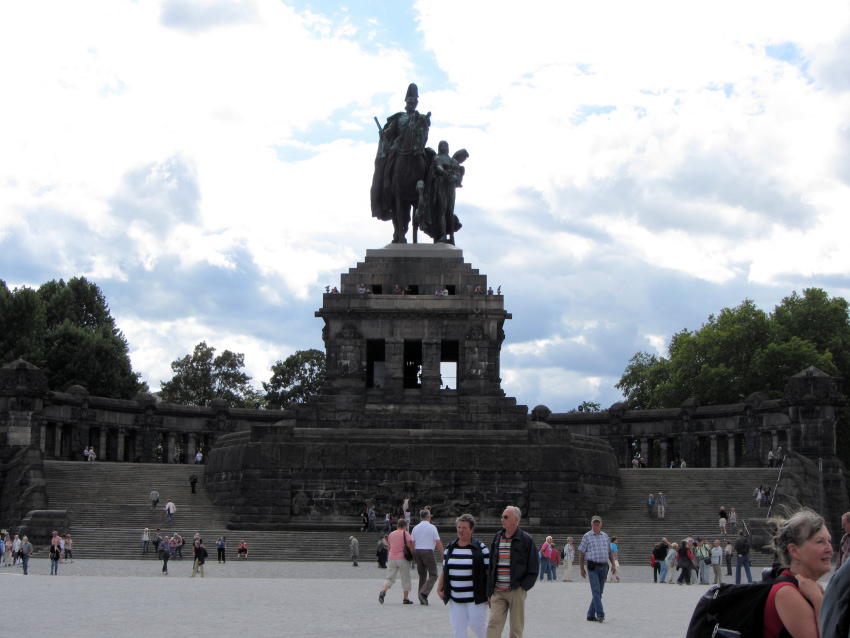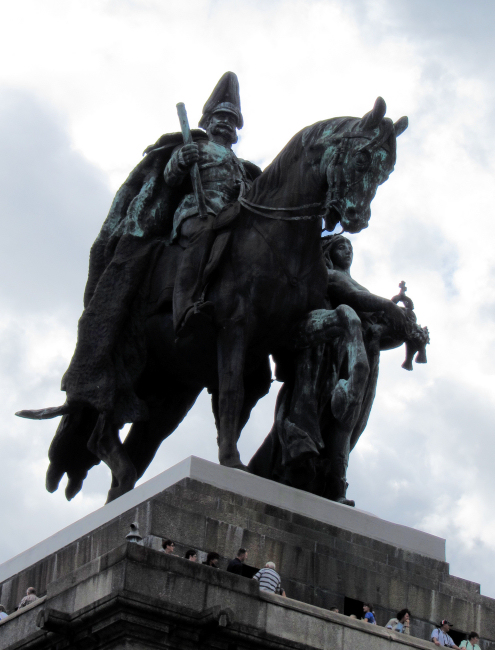
This enormous bronze equestrian statue of Kaiser Wilhelm I towers over the crowds at the Deutsches Eck, the spit of land in downtown Koblenz where the Mosel flows into the Rhine. Standing almost fifty feet high (14 meters) from plumed helmet to hooves and weighing almost 70 US tons, it embodies a spirit of nationalistic pride that speaks of a young, freshly unified Germany.
The sentiment is Old World. But the bronze … not so much.
During the last few centuries, this ancient and culturally important German city has spent a fair amount of time in the hands of the French and the Russians. So, when Germany unified in the 1800s and Koblenz came back into the fold, a grateful citizenry chose this spot to erect a monument in celebration. The Deutsches Eck plaza and its guardian statue were completed in 1897. More than a monument to Wilhelm I, it was a monument to German unification, and words carved into its granite base urged the Germans to remain united and loyal.
Then a whole lot of history happened, and in 1945, an American artillery shell destroyed the great statue. Koblenz was once more in the hands of the French, and East Germany was lost. So, in 1953, the German president came to the Deutsches Eck and dedicated it to the goal of reunification. From then on, a huge German flag flew over the plaza.
In 1989, that reunification finally occurred. Now, what to do with the Deutsches Eck?
Lots of alternatives were proposed, but the residents of Koblenz wanted their old Kaiser back, and when a Koblenz couple announced that they would pay to recreate the statue, the city happily agreed. In 1993, a crane lifted the new Kaiser Wilhelm into place.
So he’s back.
 Photographs taken September, 2011, in Koblenz, Germany. Text copyright 2011 Clare B. Dunkle. Photos copyright 2011 Joseph R. Dunkle.
Photographs taken September, 2011, in Koblenz, Germany. Text copyright 2011 Clare B. Dunkle. Photos copyright 2011 Joseph R. Dunkle.
